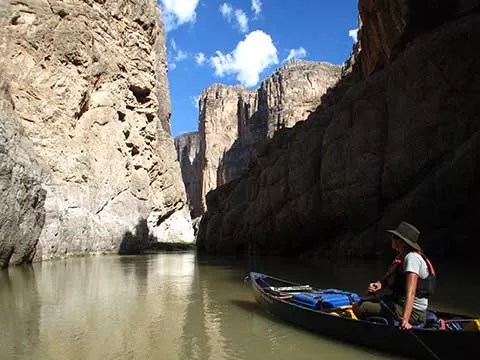For 1,250 miles, the Rio Grande forms the boundary between the United States and Mexico. In a remote stretch in West Texas, the river makes a curve to the northeast to form the “big bend.” Winding its way through deep canyons and vast desert expanses, it is here that the wild character of the river lives on.
NPS Why Is It Special?In 1968, Congress passed the National Wildand Scenic Rivers Act to protect free flowing rivers with “outstandingly remarkable scenic,recreational, geologic, fish and wildlife, historic, cultural, or other similar values.” BoundariesThe Wild and Scenic designation applies to 200 miles of the United States portion of theRio Grande from the Chihuahua-Coahuila (Mexico) state line upstream of Mariscal 
Challenges for the FutureThe Rio Grande is a slender ribbon of life that supports a myriad of plants and wildlife. People find a haven here, too. Recreation and solitude allow for a chance to escape the cacophony of our modern world, and reconnect with nature. The mission of the National Park Service is to preserve the free-flowing and natural condition of the Rio Grande Wild and Scenic River and its immediate environment for the benefit and enjoyment of present and future generations. |
Last updated: August 21, 2023
